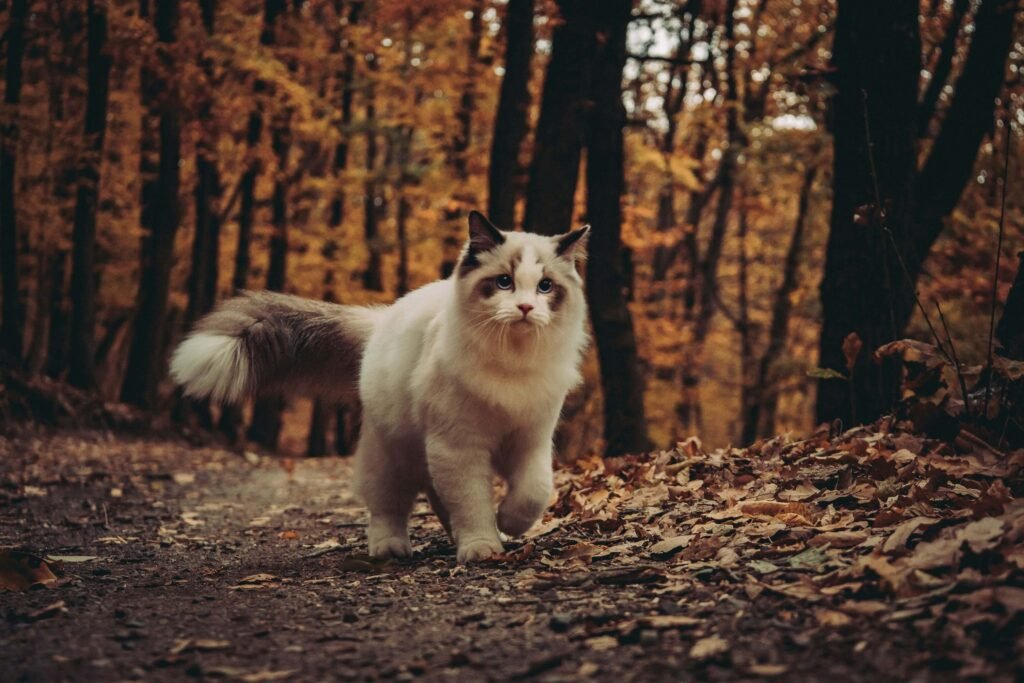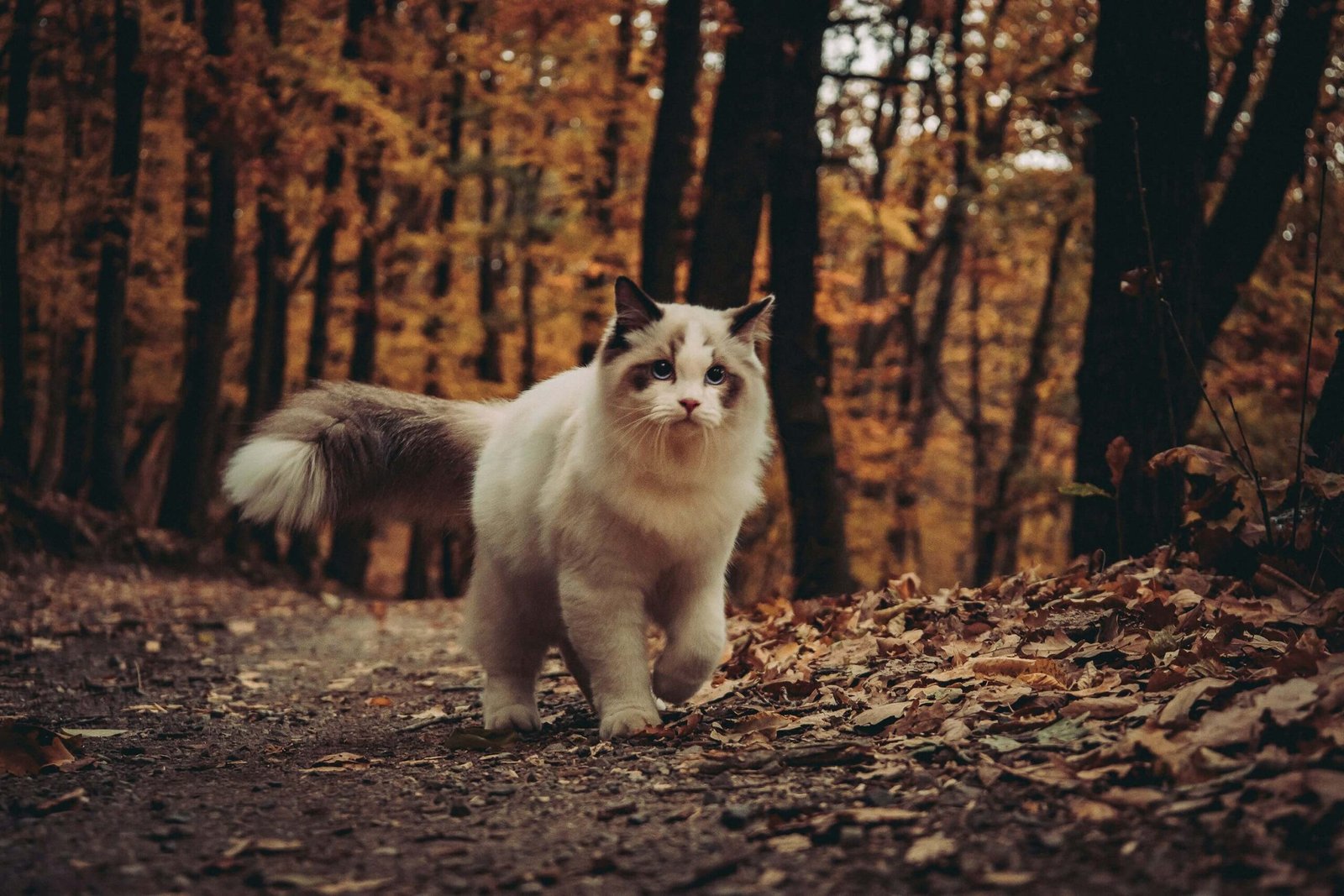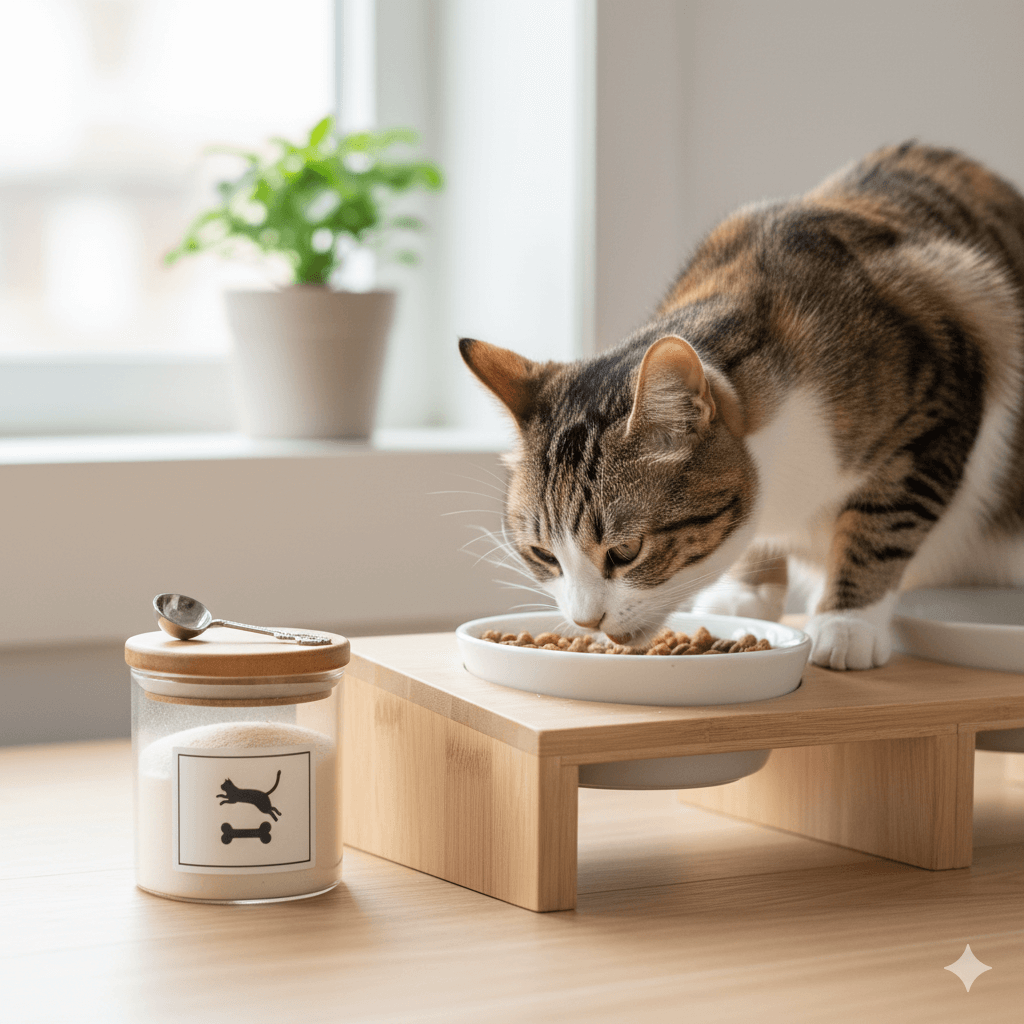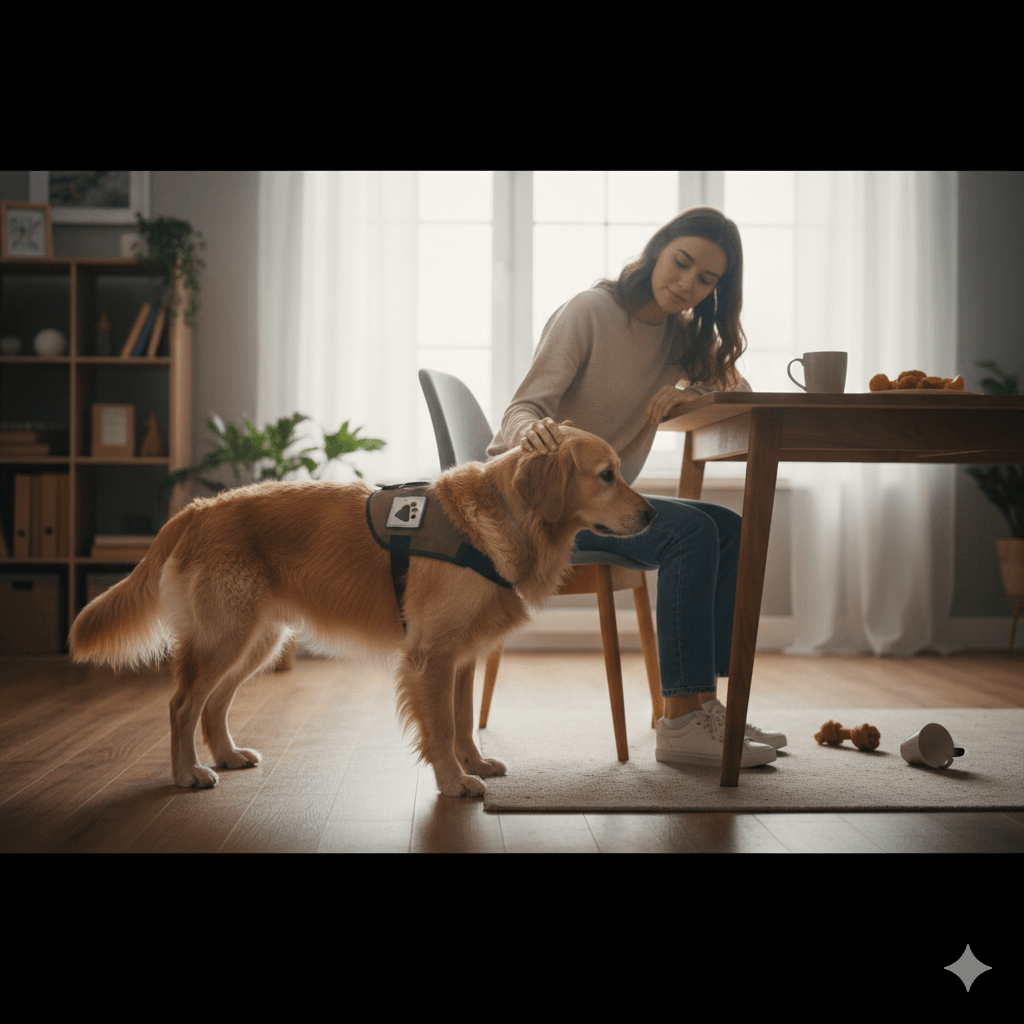How to Identify a Ragdoll Cat: A Complete Guide to Recognizing This Beloved Breed
The Ragdoll cat is one of the most beloved and recognizable cat breeds, known for its striking appearance, gentle temperament, and affectionate nature. But how can you tell if a cat is truly a Ragdoll? Whether you’re considering adopting one or simply curious about this majestic breed, learning how to identify a Ragdoll cat involves understanding their unique physical traits, behavioral characteristics, and history. In this blog post, we’ll explore everything you need to know to confidently recognize a Ragdoll cat. From their signature blue eyes to their soft, silky fur, we’ll help you appreciate what makes this breed so special.
Key Physical Characteristics of a Ragdoll Cat
Ragdoll cats are instantly recognizable due to their distinctive physical features. These traits set them apart from other breeds and make them a favorite among cat enthusiasts. Here’s what to look for:
Blue Eyes
One of the most iconic features of a Ragdoll is their stunning blue eyes, which are large, oval-shaped, and captivating.Soft, Semi-Long Coat
Their coat is silky, plush, and semi-long, giving them an elegant appearance without excessive grooming needs.Colorpoint Patterns
Ragdolls typically have colorpoint markings, meaning their ears, face, paws, and tail are darker than the rest of their body.Large Size
They are a medium to large-sized breed, with males often weighing between 15-20 pounds and females ranging from 10-15 pounds.Muscular Build
Despite their fluffy appearance, Ragdolls have a sturdy, muscular frame that gives them a solid yet graceful presence.
These physical traits are hallmarks of the Ragdoll breed, making them easy to identify once you know what to look for.
Behavioral Traits That Define a Ragdoll Cat
In addition to their physical appearance, Ragdoll cats are known for their unique personality and behavior. These traits are just as important as their looks when identifying a Ragdoll. Here’s what sets them apart:
Affectionate Nature
Ragdolls are famously loving and enjoy being close to their humans, often following them around the house.Floppy Personality
True to their name, Ragdolls tend to go limp when picked up, showcasing their relaxed and trusting demeanor.Gentle Temperament
They are calm, patient, and rarely aggressive, making them ideal companions for families and other pets.Playful Yet Calm
While they enjoy interactive play, they are not overly energetic and prefer lounging with their owners.Vocal but Soft
Ragdolls are moderately vocal, often communicating with soft, sweet meows rather than loud demands.
These behavioral traits highlight why Ragdolls are often described as “puppy-like” in their loyalty and affection.
Check this guide 👉The Enchanting World of Tuxedo Ragdoll Cats: Best 7 Tips!
Check this guide 👉The Enchanting World of Siamese Ragdoll Cats: Best 7 Tips!
Check this guide 👉Ragdoll Cat Price: Best 7 Expert Tips!

Physical Traits | Behavioral Traits |
|---|---|
Blue, almond-shaped eyes | Affectionate and people-oriented |
Semi-long, silky coat | Floppy when held or picked up |
Colorpoint patterns | Gentle and non-aggressive |
Large, muscular build | Calm and laid-back demeanor |
Medium to large size | Moderately vocal with soft meows |
Common Ragdoll Coat Colors and Patterns
The Ragdoll breed comes in a variety of beautiful coat colors and patterns, each adding to their charm. Understanding these variations can help you better identify a Ragdoll cat. Here’s a breakdown of the most common options:
Seal Point
The classic Ragdoll pattern, featuring dark brown points on a creamy white body.Blue Point
A softer, grayish-blue hue on the points, creating a more muted appearance.Chocolate Point
Warm, chocolate-brown points contrasted against a lighter cream base.Lilac Point
Pale, frosty-gray points with a delicate, ethereal look.Mitted and Bicolor Patterns
Mitted Ragdolls have white paws, while bicolors feature a more balanced mix of white and colorpoint markings.
These coat variations add to the Ragdoll’s versatility and beauty, making each cat unique while still retaining the breed’s signature elegance.
Tips for Confirming If a Cat Is a Ragdoll
If you suspect a cat might be a Ragdoll but aren’t entirely sure, there are several steps you can take to confirm their identity. Here’s how to verify:
Check the Eyes
Look for their characteristic bright blue eyes, which are a defining feature of the breed.Examine the Coat
Feel the texture of their fur—it should be soft, silky, and semi-long with distinct colorpoint markings.Observe Their Behavior
Watch how they interact with people; Ragdolls are exceptionally affectionate and enjoy being held.Assess Their Size
Compare their size to typical domestic cats; Ragdolls are significantly larger and more robust.Consult a Breeder or Vet
If unsure, seek advice from a professional who can provide expert confirmation based on breed standards.
By combining these observations, you can confidently determine whether a cat is a true Ragdoll.
Ragdoll Cat Care Tips
Caring for a Ragdoll cat involves understanding their specific needs to ensure they remain healthy and happy. These gentle giants require attention to grooming, diet, and overall well-being. Here are some essential care tips:
Regular Brushing
Their semi-long coat benefits from weekly brushing to prevent matting and reduce shedding.Balanced Diet
Provide high-quality protein-rich food to support their muscular build and maintain a healthy weight.Dental Hygiene
Incorporate regular teeth cleaning into their routine to prevent dental issues common in cats.Safe Environment
Ensure your home is free of hazards, as Ragdolls are curious and may explore risky areas.Routine Vet Visits
Schedule annual check-ups to monitor their health and address any concerns early.
By following these care tips, you’ll help your Ragdoll live a long, healthy, and fulfilling life.
Fun Facts About Ragdoll Cats
Ragdoll cats are not only beautiful but also fascinating creatures with a rich history and unique quirks. Here are some fun facts that make them stand out:
Named for Their Floppy Nature
The breed’s name comes from their tendency to go limp like a ragdoll when picked up.Developed in the 1960s
Ragdolls were first bred by Ann Baker in California, making them a relatively young breed.Highly Social
Unlike many cats, Ragdolls thrive on human interaction and often follow their owners around.Slow Maturation
They take up to four years to reach full maturity, both physically and emotionally.Non-Aggressive Hunters
While playful, they lack the hunting instinct seen in many other breeds, making them less likely to harm small pets.
These fun facts highlight why Ragdolls are so beloved and unique among cat breeds.
How to Bond With Your Ragdoll Cat
Building a strong bond with your Ragdoll cat is key to fostering a loving and trusting relationship. Their affectionate nature makes them eager to connect with their humans. Here are some ways to strengthen your bond:
Spend Quality Time Together
Engage in daily play sessions or simply relax with them on the couch.Talk to Them Often
Ragdolls enjoy listening to their owner’s voice, so chatting with them can deepen your connection.Respect Their Preferences
Learn what activities or interactions they enjoy most and incorporate those into your routine.Offer Treats and Rewards
Use treats as positive reinforcement during training or bonding moments.Create a Safe Space
Provide a cozy area where they feel secure and can retreat when needed.
By nurturing your relationship through these methods, you’ll create a lifelong bond with your Ragdoll companion.
Frequently Asked Questions About Identifying a Ragdoll Cat
Are all Ragdolls floppy when picked up?
Yes, their tendency to relax completely when held is one of their most famous traits.
Do Ragdolls always have blue eyes?
Yes, purebred Ragdolls always have striking blue eyes, though mixed breeds may vary.
Can Ragdolls be short-haired?
No, Ragdolls are known for their semi-long coats; short-haired cats are not true Ragdolls.
How can I tell if my cat is part Ragdoll?
Look for traits like blue eyes, colorpoint markings, and a laid-back personality, then consult a vet or breeder.
Are Ragdolls good with children?
Absolutely! Their gentle and patient nature makes them excellent companions for kids.
Final Thoughts: Appreciating the Unique Beauty of Ragdoll Cats
Identifying a Ragdoll cat involves recognizing their unique combination of physical and behavioral traits, from their mesmerizing blue eyes to their affectionate, floppy nature. These gentle giants are more than just a pretty face—they embody a perfect blend of elegance, loyalty, and charm. Whether you’re admiring their luxurious coat, marveling at their calm demeanor, or simply enjoying their company, Ragdolls leave a lasting impression on everyone they meet. By understanding what makes this breed so special, you’ll not only be able to identify a Ragdoll but also appreciate why they’re cherished by cat lovers worldwide.
Understanding Bone Supplement for Cats: Best 7 Expert Tips! – Safe, vet-approved guidance for strong feline bones & balanced nutrition.
Bone Supplement for Dogs: Best 7 Expert Tips! – Expert guide to calcium, collagen & bone health for every life stage.
Understanding Can Cats Get Sunburn: Best 7 Expert Tips! – Protect your feline from UV damage with vet-backed prevention strategies.
How to Train a Seizure Alert Dog: Best 7 Expert Tips! – Learn expert-backed steps to nurture natural instincts into reliable, life-saving seizure alerts.





